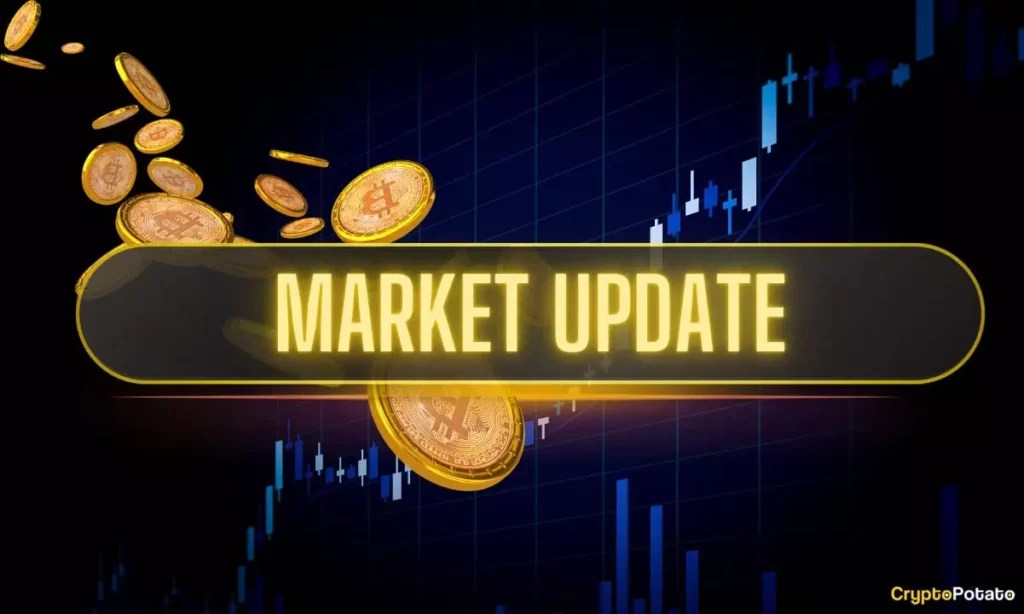This week’s market activity reveals a disturbing pattern: despite fleeting glimmers of optimism, the foundational vulnerabilities within the modern financial system remain unaddressed. While headlines celebrate Bitcoin’s minor gains and record-breaking altcoin surges, these are mere illusions of strength masking deeper issues that threaten to precipitate a significant correction. The mere fact that Bitcoin, often branded as digital gold, struggles to break free from the $116,000 to $118,000 range indicates an underlying weakness rather than robustness. Markets are simultaneously roaring for select tokens like BNB and AVAX, while Bitcoin stalls—prompting a question: are these rallies sustainable or simply psychological bubbles fueled by speculative fervor? History suggests the latter. As a center-right liberal thinker, I recognize the importance of pragmatic skepticism. Overreliance on monetary easing, speculative assets, and unsustainable gains set the stage for inevitable disappointment, especially when the broader economy’s structural issues remain unaddressed.
Federal Reserve’s Rate Cut: A Short-Lived Boost with Long-Term Risks
The recent Federal Reserve rate cut, the first in 2025, signals a misguided attempt at economic stimulus that may do more harm than good. While markets initially responded with enthusiasm, brushing off concerns about inflation and debt accumulation, this optimism is misplaced. It’s a classic case of trying to patch over deeper economic faults with superficial monetary policy adjustments. The Fed’s decision, influenced perhaps by political pressure and short-term market performance, continues the dangerous game of kicking the can down the road. History has demonstrated repeatedly that dramatic rate cuts without addressing underlying fiscal discipline merely inflate asset bubbles, creating false wealth and setting the stage for a reckoning. Although Bitcoin and other crypto assets briefly surged in anticipation of the Fed’s move, their rally appears disconnected from genuine value creation. Instead, they are riding a wave of liquidity-induced froth, vulnerable to the inevitable deflationary correction that foundational economic imbalances will precipitate.
The Evolving Narrative: From Safe Haven to Speculative Playground
For years, Bitcoin has been marketed as a safe haven, a hedge against fiat currency devaluation. However, recent market behavior, notably Bitcoin’s failure to sustain higher levels and its stagnation amid soaring gold prices, challenges this narrative. Gold hits new peaks while Bitcoin’s momentum stalls—an unmistakable sign of a divergence that questions the crypto’s status as a reliable store of value. The market’s enthusiasm for altcoins like BNB soaring past $1,000, and newcomers like HYPE racing upward, underscores a broader trend: speculative mania overtaking fundamental trust. It’s increasingly evident that many investors are chasing quick gains rather than hedging against economic turbulence. This shift toward reckless speculation is reminiscent of previous bubbles, and history’s lessons warn us: such patterns often end in collapse. A cautious investor recognizes that aligning with untested, overhyped assets is a gamble with high stakes and little reward beyond short-term gains.
Regulatory Uncertainty and the Fragility of Crypto Innovation
Meanwhile, regulatory bodies in the US continue to delay crucial decisions, further destabilizing an already volatile market. The SEC’s postponement of the Truth Social Bitcoin ETF decision underscores the lack of clarity and confidence in the regulatory environment. This avoidance fuels speculation, yet also leaves the market vulnerable to sudden crackdowns or policy shifts that could swiftly wipe out gains. Notably, record inflows into XRP and DOGE ETFs represent a paradox: massive demand driven by hype rather than fundamentals. As regulatory uncertainty persists, mainstream institutional adoption remains elusive, and potential crackdowns threaten to erode this fragile veneer of legitimacy. How long can a market driven by hype, with regulatory walls closing in, retain its resilience? Not long. History teaches us that markets driven by speculation and regulatory limbo tend to unravel rapidly when external shocks occur.
The Fragile Foundation of Crypto’s Future: Innovation or Illusion?
Ethereum’s upcoming Fusaka upgrade exemplifies the industry’s constant cycle of hype and delay. While developers promise technological breakthroughs, often these milestones are mere incremental updates rather than revolutionary shifts. The optimistic timelines often prove overly ambitious, and delays erode investor confidence. As the crypto ecosystem matures, it becomes clearer that without fundamental innovation and sustainable use cases, the asset class remains susceptible to a major correction. The recent surge in certain tokens masks an underlying stagnation and overvaluation of many projects. In a broader sense, the crypto market’s future depends not on hype cycles or fiat inflows but on genuine utility, sound economics, and robust regulatory frameworks—none of which are reliably in place today. Until then, the market remains a house of cards, waiting for the inevitable gust of reality to topple the fragile edifice built on speculation and loose monetary policy.
In conclusion, this week’s market movements serve as a stark reminder: the current crypto rally is more illusion than reality. Beneath the surface, systemic flaws threaten to unravel prolonged overvaluations, leaving investors exposed to a turbulent correction that could rewrite the landscape entirely. The combination of reckless monetary policy, regulatory uncertainty, and speculative excess signals one inexorable truth—collapse remains an unavoidable eventuality. As a pragmatic observer rooted in center-right liberalism, I see this as a necessary recalibration, a correction that will ultimately restore balance and trust—something the current market desperately needs but is unlikely to achieve without a painful purge.

















Leave a Reply